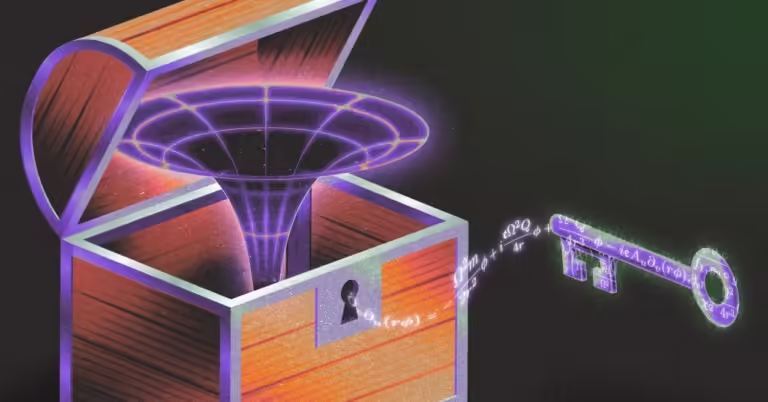Now, two mathematicians have proven Hawking and his team wrong. This new research, contained in two recent papers by Dr. Christoph Kähle of the Massachusetts Institute of Technology and Dr. Ryan Unger of Stanford University and the University of California, Berkeley, demonstrates that there is nothing in the laws of physics we know that prevents extremal black holes from forming.
Michalis Daffermos, a mathematician at Princeton University and Kahle and Unger’s doctoral supervisor, called their mathematical proof “beautiful, technologically groundbreaking and physically astonishing,” adding that it suggests the possibility of a richer, more diverse universe in which “extreme black holes may exist astrophysical-wise.”
That doesn’t mean it’s real. “Just because there’s a mathematical solution with nice properties doesn’t necessarily mean that nature will exploit it,” Khanna says. “But if we somehow found such a solution, it would force us to think hard about what we’re missing.” Such a discovery could raise “some pretty radical kinds of questions,” he noted.
The law of impossibility
Prior to Kähle and Unger’s proof, there was good reason to believe that extremal black holes could not exist.
In 1973, Bardeen, Carter and Hawking published four laws for the behavior of black holes, which are similar to the long-established four laws of thermodynamics, a sacred set of principles that state, for example, that the universe becomes disordered over time and that energy can neither be created nor destroyed.
In their paper, the physicists proved the first three laws of black hole thermodynamics: the zeroth law, the first law, and the second law. Additionally, they hypothesized that the third law (which is similar to the standard law of thermodynamics) is also true, although they have not yet been able to prove it.
The law states that the surface gravity of a black hole cannot be reduced to zero in a finite time, i.e., there is no way to create an extremal black hole. To support their claim, the three argued that any process in which the charge or spin of a black hole reaches an extremum could also result in the black hole’s event horizon disappearing entirely. Black holes without an event horizon are called naked singularities and are widely believed to be unable to exist. Furthermore, since the temperature of a black hole is known to be proportional to its surface gravity, a black hole without surface gravity would also have no temperature. Such black holes would not emit thermal radiation. Hawking later proposed that black holes must emit thermal radiation.
In 1986, physicist Werner Israel published a proof of the third law that seemed to put an end to the problem. Suppose we wanted to create an extremal black hole from an ordinary black hole. We could do this by making the black hole spin faster or by adding charged particles. Israel’s proof seemed to show that doing so would not reduce the black hole’s surface gravity to zero in a finite amount of time.
As Kahle and Unger ultimately discovered, Israel’s arguments were hidden by flaws.
The End of the Third Law
Kähle and Unger did not set out to find an extremal black hole, but discovered it purely by chance.
They were studying the formation of electrically charged black holes, and “realized that you could make black holes with any charge-to-mass ratio,” Kale says, including the highest possible charge, a characteristic of extreme black holes.
Daffermos recognized that his former students had found a counterexample to Bardeen, Carter and Hawking’s third law: they had shown that it was possible to transform a typical black hole into an extremal black hole in a finite amount of time.
Starting with a non-rotating, uncharged black hole, Kale and Unger modeled what would happen if they placed it in a simplified environment called a scalar field, which imagines a background of uniformly charged particles. They then added charge to the black hole by hitting it with pulses from the field.

